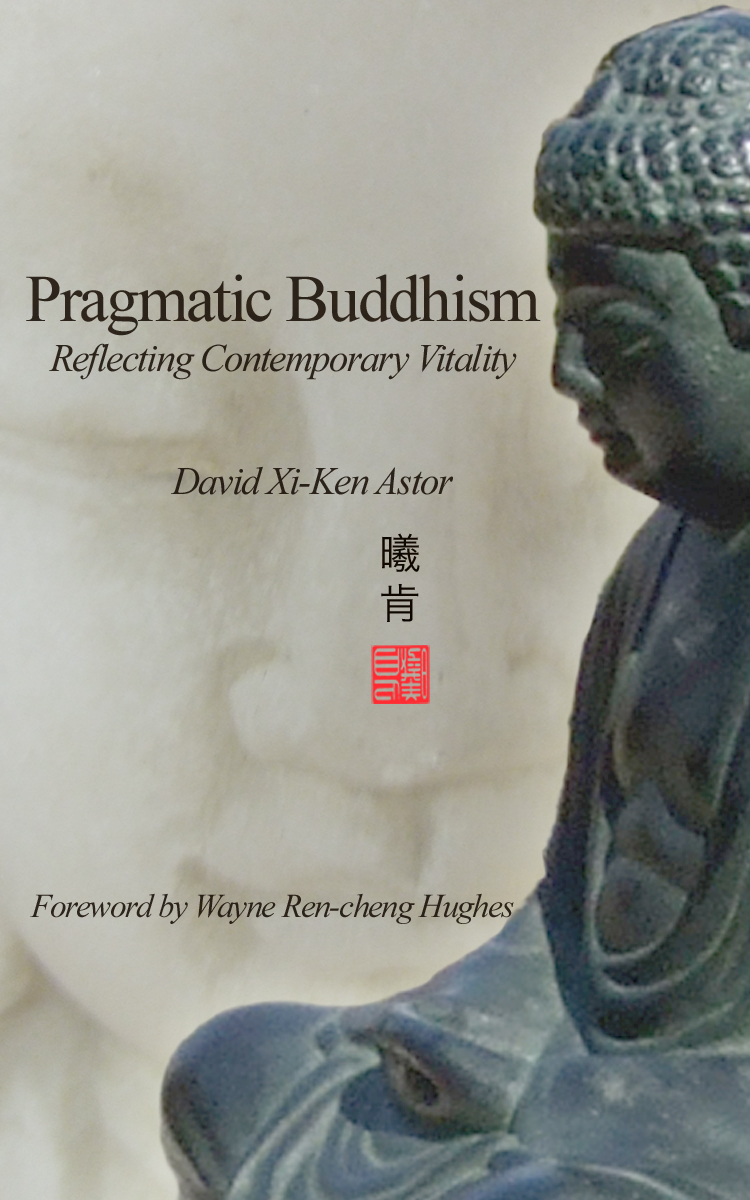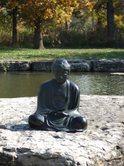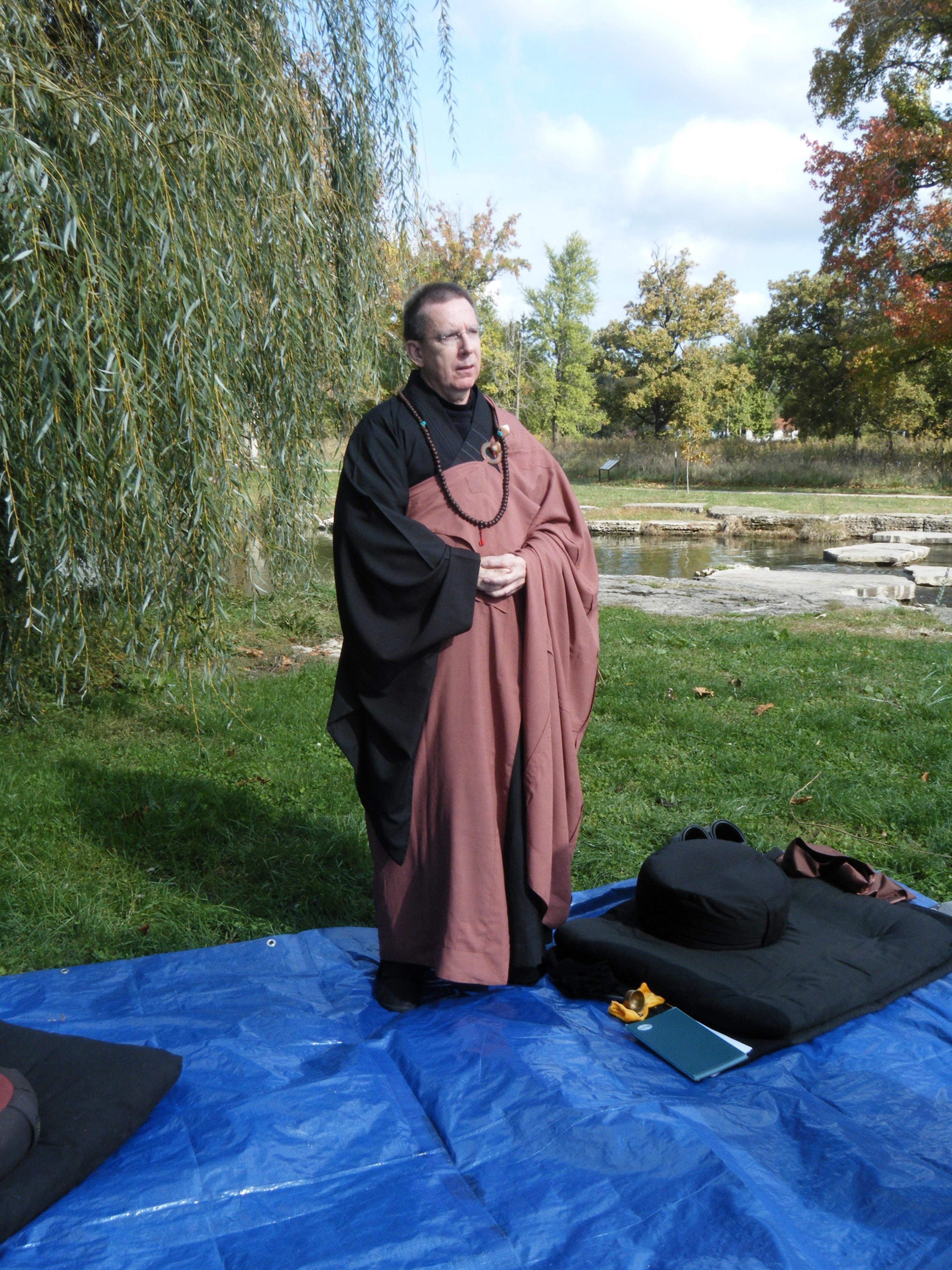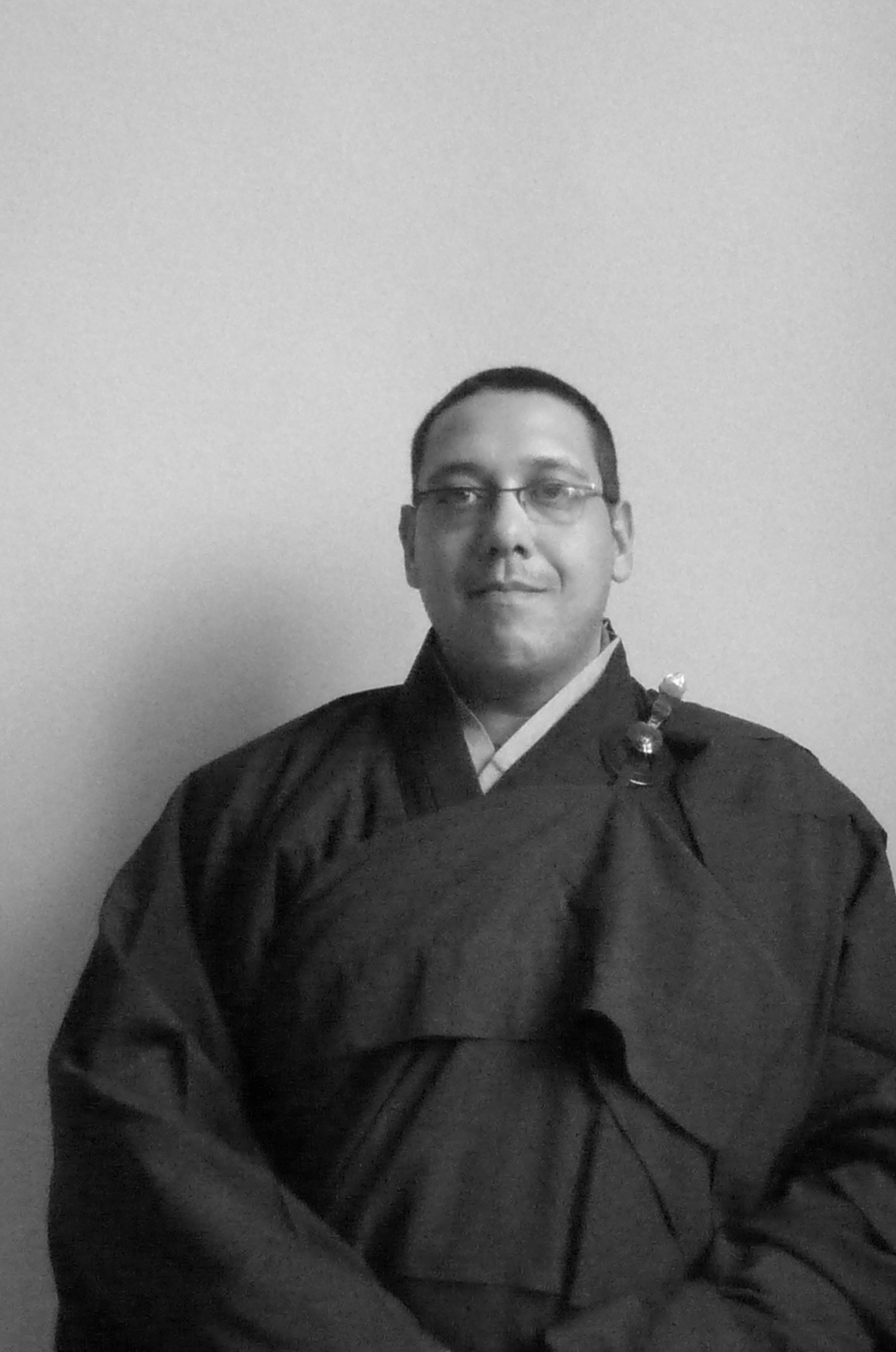By: Venerable Rev. Brian Chang-Jin Kenna, OEB
A Dharma talk given during the Fall Leadership Retreat 2020
Sentient beings are numberless; I vow to save them.
Desires are inexhaustible; I vow to put an end to them.
The dharmas are boundless; I vow to master them.
The Buddha’s Way is unsurpassable; I vow to attain it.
One of the traditional Buddhist practices or approaches to practice is taking vows. So what does taking vows mean? Other words could be commitment, or dedication. I want to talk about its use as a specific physical practice.
The Bodhisattva Way of practicing together to help support and realize universal liberation is to express and actualize our caring for all beings. Paradoxically, the style in Soto Zen practice is to start with the highest vows, as well as the highest form of meditation. So we begin from these inconceivable vows: to free all beings; to cut through all delusions; to enter all of the gateways to truth; and to realize the Buddha way. This ultimate level of vow may seem like some fairy tale or fantasy. But how we actually carry that out is connected to very practical, everyday vows. Both levels arrive together. The ultimate vow is to free all living beings, to awaken together with all beings, to be willing to just be ourselves, sitting here on our cushions, and to see everything arising together. We see how in various ways we support each other, or don’t support each other, or get all tangled up together. It is just that here we are, together. Maybe another word for vow is willingness. This includes our dedication and intention to practice uprightly together, and allows something to happen within which we are all connected.
Again, these four inconceivable vows that we chant are not in the realm of ordinary human activity. They go beyond. And yet they are connected to us. One of the ways to talk about this ultimate vow of freeing all beings is also to see ourselves in an ultimate way. What is, for you, the most important thing? This is our practice as we sit facing the wall, trying to sit upright, being present until the bell rings. As we sit, naturally thoughts and feelings arise, intentions appear. We see all of the ways in which our mind is jumbled around. Suzuki Roshi used to ask, “What is the most important thing?” The most important thing may be different for each of us. The most important thing could be different today than it is tomorrow. The most important thing may change during a period of zazen. But there must be this consideration of what is really important to me. What is my life about? This is the same level as freeing all beings. How can we give a name to the meaning of this precious, wonderful, impermanent life? Just to look at what means the most to us is an important part of our practice, and connects to this ultimate vow. How do we free all living beings? How do I find what I want to do with this life? It is alive, and changing.
Suzuki Roshi also said that the most important thing is to find out what is the most important thing. But it is also important to find out what are the fairly important things. Perhaps there is not one single most important thing. Maybe we can never say what that most important thing is; but sometimes we can. I have heard people say what the most important thing is for them. But it might change. We should also investigate what are some of the important things. What really matters to you as you sit there on your cushion, trying to be upright, inhaling, and exhaling?
How is this related to Mahayana Buddhist practice of the basic vows we chant? “I vow to enable people to understand the truth of the origin of suffering” This is about my delusions, and of course everybody else’s delusions, the government’s and the culture’s delusions; delusions are everywhere. “I vow to enable people to peacefully settle down in the truth of the path leading to the cessation of suffering.” Actually there are innumerable paths to enter into reality, into truth, into caring, into being this person right now, and into freeing all beings. Such paths are as plentiful and numberless as the delusions. Maybe they are not different from the delusions. Every delusion, every hang-up, every problem, may also be an opportunity or pathway into awakening to universal realities.
Finally, “I vow to enable people to attain Nirvana.” Buddhist practice is not one thing.. It is a way or path. Dogen from his “Awesome Presence of Active Buddhas” essay: “Just experience the vital process on the path of going beyond Buddha.” There is a vital process, a path, and it is alive. How do we realize it? How do we turn toward it? How do we remember: oh yes, I said I wanted to practice awakening, and here I am. In a way, this is most alive when we realize that we have not been taking care of what is really important to us.
I have been speaking about the level of ultimate vow. But the actual practice of vow, as a practice, can be very specific and concrete. Vowing is one of the transcendent practices that also include the practice of generosity, the practice of patience, the practice of meditation, the practice of prajna or wisdom, and the practice of knowledge, which is knowing how to enact our practice intention. Vow is a specific practice that we can actually work on, just like we endlessly work on how to be generous with ourselves and others, how to be patient with all of the problems of the world and all the problems on our own seat. We can actually take on this practice of vow. This practice is not just the ultimate vow to free all beings, but part of how we do that is to take on particular practices, particular limited commitments, such as sitting here in a retreat. Committing to studying with a teacher on a weekly basis. We have an intention and we try and do it. There can be innumerable kinds of things we can take on as actual practices, various large and small projects, whatever you see that needs to be done. If a fence is needed over there, we might see if we can build it. Once we are engaged in the level of ultimate, inconceivable vow, then very specific, concrete activities are part of the practice of commitment or vow.
Vow always becomes relevant in early January, because we may make New Year’s resolutions. Sometimes these can be frivolous, but New Year’s resolutions are a way of enacting the practice of vow in our culture. There are many gateways to Dharma, even in our primitive, corrupt culture. Of course we can take on a New Year’s resolution any month of the year. Any time we could take a resolution for a week or a month or a year or a lifetime. But people think about it when it is January 1st.
I have some resolutions that I’ve decided I would try and act on this year and into the next I a resolution to try and manage my different activities more effectively. I am trying to use my time more effectively. So that is a New Year’s resolution. Who knows if I actually will be able to do that? But I am going to try.
I’m sure some of you have these kinds of practical resolutions. Whether New Year’s resolutions or not, they are projects, specific limited commitments, that we try to take on. We all wonder how to take care of the things around us in the world. How do we take care of family and friends? How do we take care of the things that we want to do?
This level of what is important includes many things. It includes something as simple as making sure to get exercise every week, or calling a friend that you haven’t spoken to in a long time. There are lots of things that come up if we are looking at what is my intention, what am I up to. They can be wonderful bodhisattva activities, or they can be ordinary things. We have many different things that we want to do.
Part of this practice is to bring into consciousness the things we want. You may think that you don’t have any resolutions, that you don’t have any particular vows. But actually, unconsciously we have many. We have things that we think we should do. We have patterns going back to our childhood that we may not be aware of, but that are our habitual modes of conduct. When we actually take on vow as a practice, and say, for example, I am going to be more generous in giving my time and resources to others, taking that on as a conscious intentional vow, when we consider our intentions, we can also see our unintentional vows. There are things we do habitually that maybe we do not need to do, or maybe we do not really want to do. But we still think we should do them. Maybe such an intention has actually helped get us somewhere, but perhaps we no longer need to do that. Maybe it was a good thing to do for a while, but now I don’t need it. When we are aware of our intentions, we can see them, and we have a choice.
We each have various vows already. So in the practice of sitting still and examining what is important to us, what we care about, we can see our unconscious habitual vows. And when we see them we have a chance decide whether we really want to do that. Maybe you do. But it is not about what you think you should be doing, but what is it you really want to do. Freeing all living beings is not something that you should do because somebody else says you should. Ending all delusions is not something that I think you should do, or Buddha thinks you should do, or Suzuki Roshi thinks you should do. We chant those vows because then we have a chance to see whether that is a path we want to be near. We may not know how to do it. We may not know how to be more generous. But we can decide that is something we want to try and do. When we start to do that, we see all the ways that we are caught by habits. Substituting a limited positive intention, vow, or commitment may be like assuming a positive addiction. Positive does not mean that it is necessarily good according to somebody else’s idea, but we can say I myself really want to do that. We can weigh these choices against the background of the Three Pure Precepts.
The practice of conscious vow is a little like ritual practice. Even though that’s a different realm of practice than vow, it’s quite comparable in terms of this aspect of arousing consciousness. We sometimes chant the Heart Sutra, which ends with this old traditional Sanskrit mantra supposed to have beneficial effects: “Gate, gate, paragate, parasamgate, Bodhi svaha.” We chant other teaching Sutras, etc in English, and sometimes a phrase may strike us. You can use that as a mantra, a phrase you say silently to remind yourself of something.” We may not know what it means, but that does not matter. Or it could be a line from a popular song, such as: “Let it be, let it be, let it be, let it be.” When we do this practice of repeating some teaching as an intentional conscious mantra, we may see the other mantras that are there, our unconscious mantras, negative mantras about ourselves or the world. We may unconsciously be telling ourselves: I can’t do that; I don’t want to see those people; I don’t want to say hello to that person.
The practical aspect, connected to the ultimate level of freeing all beings, is actually taking on some very limited specific practice. It may be saying, “Let go of hundreds of years and relax completely,” or just saying hello to people. Try taking on some intentional specific physical practice, something we actually do, like going and visiting a friend who’s sick. These practices are endless.
This is actually how we put our zazen to work. For a while I have been discussing zazen as more than just sitting on a cushion. As we are sitting, naturally this body and mind is expressing our Buddha nature. No matter what posture we are in, how we are expresses something, always. When we take the position of the Buddha it expresses a particular kind of openness, awareness, and uprightness. And when we are willing to do that, to be upright and just be present with ourselves and face ourselves, not running away from who we are, it allows a connection to other activities in our life.. One way to do that is this practice of vow. So this practice of vow is a way of specifically joining our own energies, our own expressive personal Buddha nature, to the kind of deep connection that we have some access to in zazen. This is so even if you are sitting for forty minutes wondering when the bell is going to ring, and wanting to move around because your knee is hurting. Even in a so-called difficult period of zazen, still there’s something going on that is deeper than your idea of whether this is a great period of zazen, or a difficult period of zazen.
Maybe calling this “vow” sounds too big, too serious. Just make a commitment to something, even if some of us are nervous about commitments. How do we decide to take on something? Again, it might be just going to a Dharma talk, or going for a walk this afternoon. It could be a very small thing. But we actually decide, I’m going to do that. Then we do it. This strengthens our zazen. This strengthens our connection to freeing all living beings.
In Buddhism we have various ways to check ourselves in this practice. The precepts are also a way of looking at our practice of specific vows and universal vow. There are ways to remind ourselves of what our deepest zazen mind wants to do. Formally when people take the precepts they make a vow to follow these precepts. So we have a little ceremony, and people receive a Dharma name. This is a kind of vow practice. But the precepts are reminders of how awakening expresses itself, and the values we feel in that experience. We see our inner intention to not be harmful to ourselves or others, and to lessen harm in the world. And we see our own direction to generosity and tolerance.
The precepts are not about how you should not do this or that. They are actually ways of expressing something positive to which we want to make a commitment. You may think that you should not enjoy doing the things that you enjoy doing. You may think they are bad. But actually you should enjoy doing what you enjoy doing. If you like eating ice cream, please enjoy when you eat ice cream. That is a kind of practice of vow. See what it is that you actually like to do. See how that works and what that is. You may finally decide you do not really like to do it. But you cannot find out until you are willing to actually take it on. This is like our practice in zazen.
But this practical approach to vow that I am describing is always in the context for us of the fundamental inconceivable vow of the bodhisattva way, to be helpful to all beings. When we care that All Beings are free from suffering, this informs our wholehearted engagement in the particular practical activities we take on. Then they are not separate. Saying hello to people on the street can be part of your practice of freeing all beings. Going to the store might be a way of entering all Dharma gates. The most important thing for us is not separate from taking care of particular, supposedly small matters.
This bringing our intention to our life and our activity helps us see this vital process on the path of total emancipation. This vital process is the path of going beyond Buddha, not getting stuck in some version of Buddha, but actually making Buddha alive in our life. We see what we want to do, and how that connects with everyone else. Also we encourage everybody else to do what they want to do. There is a level of trust or faith involved in this. Can I trust that it’s okay for me to be the person I am? Can I trust that I actually can do what I want to do, that I can enjoy doing what I want to do? This is what’s sometimes called Buddha nature. We say, okay, here I am. I will do this and I will look at it, and see if I still really want to do it.
Practitioners come to retreat hoping to get great benefit and go home a new person. This attitude is very good in itself but it can also become an obstacle to practice. Harboring this kind of desire will distract you from your method, and the harder you press the greater the obstacle becomes. Expecting to gain something, as well as being afraid of not practicing well are both incorrect attitudes. But, while having a seeking attitude is counter-productive, we still need vows to keep ourselves from faltering on the path. There is a saying that before one is liberated from the cycle of birth and death, one is like an ant in a red-hot frying pan.
When he meditated beneath the Bodhi Tree, Shakyamuni vowed that he would not rise from his seat until he realized supreme enlightenment. By fulfilling this vow he became a fully awakened being, a Buddha. Once a traveler knows the directions to his destination, he should just get on with the actual traveling. Even if you cannot yet see the final destination, you need not be doubtful or anxious. To make a vow is to set the direction and the goal, and the practice is our vehicle. Vows andcontinuous practice go together.
🙏🏼



















































































I enjoyed this written work about our intention to practice and the manner in which the being and the doing are linked. This is a very significant piece of our world interaction as a Buddhist – our daily actions are informed by our deep study, and in ‘taking our precepts’ out into our world. I have lately been exploring the role the conditioned mind plays in relation to guilt and shame and have spent the last three months peeling that layer away, and opening into awareness of this when it arises. Noticing it – similar to how you described it as being conscious. Over the holiday I am tackling love. How to open to authentic love, giving, generosity – I am enjoying giving myself these challenges as I move deeper and deeper in my practice.